













Well Preserved Genuine Simple Ancient Roman Moesia Red Terra Cotta Oil Lamp about 100 A.D. with Roman Numeral “I” Trademark.
CLASSIFICATION: Roman/Moesian Terra Cotta Oil Lamp of Very Basic and Simple Style.
ATTRIBUTION: Roman Provincial Moesia (Present-Day Bulgaria), First Century A.D.
SIZE/MEASUREMENTS:
Length: 78 millimeters (3 1/8 inches).
Width: 66 millimeters (2 2/3 inches).
Height: 24 millimeters (1 inch).
CONDITION: Excellent. Typical soot stains around wick hole indicative of ancient use. Some alkaline deposits.

DETAIL: This is a very nicely preserved red-colored terracotta oil lamp dated to the first century A.D. Its origin is Roman Provincial Moesia, present-day Bulgaria. This is a very basic, simple and common style – you could call it “generic”. It is the “Volkswagon” of oil lamps, a very basic and simple style for simple and limited budgets – something you would find in the home of the ordinary man of the first century A.D. Though by no means rare, it is uncommon to find such a nicely preserved specimen and in such pristine condition. Though there are some rather hard alkaline deposits inside the bowl of the oil lamp, it is in otherwise very good condition, sound, unbroken..
There’s also a trademark of some sort on the underside surface of the pedestal. It too is a bit indistinct, but it seems to be either a Roman numeral “I”, or perhaps simply a line. However a single line seems rather unlikely, a trademark should mean something. SO it seems most likely that it would have been intended to signify the numeral 1. It was not uncommon for the artisans who produced these pieces to leave some sort of “trade mark” on the underside of the pedestal so as to identify it as their produce.
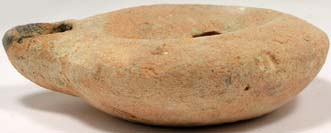
The style is very characteristic of the lamps manufactured for domestic use in the Roman Provinces from Pannonia (Hungary) to Moesia (Bulgaria), and even in Rome itself. Oil was filled into the center hole, and a wick placed in the front hole. Such oil lamps were mold-produced in two parts, then assembled by hand. Lamps such as this were produced in huge quantities and traded throughout the Roman Empire. The lamp is in very good condition, without breakage or chips or repairs. The integrity of the vessel is unimpeached. It is truly in very good condition, a remarkable, poignant, and evocative relic of the glory that was the Roman World.
HISTORY OF POTTERY: Pottery is amongst the most abundant artifacts unearthed during excavations of Roman sites. Abundant throughout the empire, specimens such as this were even routinely and systematically exported by the Romans. Manufactured throughout the empire, from Gaul to Italy, the product was widely distributed throughout the Mediterranean world and the Roman colonies from Britain to Asia Minor. Pitchers like this were utilitarian implements both for the kitchen and dining table. Most terra cotta pieces such as this were functional kitchen items, and tended to be rather plain. The most widely used pottery in the ancient world were oil lamps, bottles, unguentariums, pitchers, bowls and plates. Their basic shapes remained unchanged for over a thousand years. The bottles and pitchers were used to store wine, water, oil and other liquids.
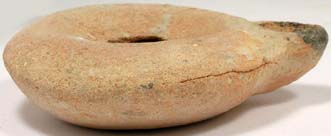
HISTORY OF ANCIENT ROMAN MOESIA:The Roman Province of Moesia was founded around 44 B.C. in an area which is now Serbia and Bulgaria. Ethnically the Moesians were Thracian and Illyrian tribes who had settled in the country of Moesi. Roman history records little about them until during the reign of Augustus. In 75 BC C. Scribonius Curio, proconsul of Macedonia, had taken an army as far as the Danube and gained a victory over the inhabitants. Under Augustus, Marcus Licinius Crassus was sent to bring the native populations under control. He succeeded in conquering the peoples in 30 B.C. Moesia became a Roman Province in 6 A.D.
The relationship between the Roman Empire and the Moesians was a symbiotic one. Rome stimulated agriculture and commerce, raised the standard of living, and encouraged city life. Roman peace provided for the transmission of Greek culture and art. In exchange, the Moesians provided a supply of grain for the Romans. The native inhabitants also supplied men for the defense of the Roman Empire. In the reign of Domitian (85-86 A.D.) the province was split into Moesia Superior and Moesia Inferior. The River Ciabrus (Tsibritsa) served as the boundary between the two. The east coast of Moesia was on the Black (Euxine) Sea.

The Danube River, along with its tributaries, the Drinus (Drina) and the Margus (Morava) Rivers, ran through the province. Moesia was a Roman military stronghold because it lay on the Black Sea and the Danube ran through the province. Moesia's location was on the edge of the Roman Empire, connecting the Roman Procines of Thrace and Pannonia, which was why there existed a significant roman military presence. The Roman Legions posted to Moesia Superior had the main role defending Macedonia and the trade routes between Thrace and Pannonia. The Roman legions posted to Moesia Inferior had a similar role in defending Thrace and the imperial interests at the intersection of the Black Sea and the Danube River.
The main threat to the Roman Legions defending these provinces were the Goths and Germanic tribes, as well as the Scythians and Sarmatians. Moesia never was fully Romanized because there was constant movement of the native tribes. The objective of the Roman Empire was fully to exploit the natural resources that Moesia had to offer. Those natural resources included gold and other minerals. Along with the precious natural resources, Moesia was rich in farmlands. Ti. Plautius Silvanus Aelianus was the first governor (57-67 A.D.) to add to the grain supply of Rome a great quantity of Moesian wheat. In addition to the farmlands, there was a vast amount of pasture land and orchards.
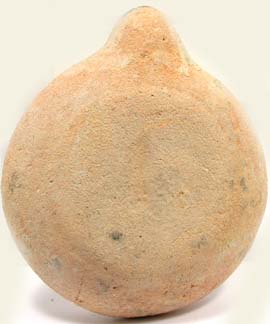
The chief towns of Upper Moesia were Singidunum (Belgrade), Viminacium (Kostolac), Remesiana (Bela Palanka), Bononia (Vidin) and Ratiaria (Archar). Of Lower Moesia: Ulpia (Gigen), Novae (Svishtov), Nicopolis ad Istrum (near the river Jantra), Odessus (Varna) and Tomi (Constanta). The poet Ovid was banished to Tomis in 9 A.D., and lived there until his death in 17 A.D.. Ovid was not fond of Tomis, or Moesia for that matter. He described the inhabitants as barbarians. Most of the disdain in letters was probably exaggerated but he was unhappy about being exiled so far from Rome.
Ovid complained that the farmers could not plow their fields without bringing their weapons into the fields with them such was the seriousness of the threat from the Goths and the Germanic tribes. The ancient city of Tomis is still exists beneath the modern city of Constanza. Archaeological excavations had recovered include statuary (including the god of the Black Sea “Pontus”, and “Glycon” the sheep-headed snake-god), coins, the "Mosaic Building” (a three-story commercial complex which included warehouses filled with intact amphorae, and a large bath house.
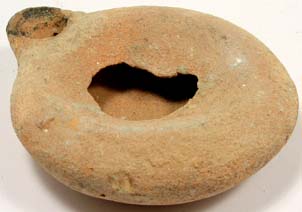
In 378 A.D. an army of Visigoths, Ostrogoths, and some non-Germanic Alans defeated the Roman Emperor Valens in a great battle near Adrianople around 378 A.D. setting the stage for the final collapse of the Western Roman Empire. Eventually Moesia passed out of Roman control around 395 A.D. when Emperor Theodosius died. Rome was no longer able to defend the frontier borders, and frequent attacks by the Goths led to the complete disintegration of the province. In the 7th century Slavs and Bulgars entered the country and founded the kingdoms of Serbia and Bulgaria.
ANCIENT ROMAN HISTORY: One of the greatest civilizations of recorded history was the ancient Roman Empire. The Roman civilization, in relative terms the greatest military power in the history of the world, was founded in the 8th century (B.C.) on seven hills alongside Italy’s Tiber River. By the 4th Century (B.C.) the Romans were the dominant power on the Italian Peninsula, having defeated the Etruscans, Celts, Latins, and Greek Italian colonies. In the 3rd Century (B.C.) the Romans conquered Sicily, and in the following century defeated Carthage, and controlled Greece. Throughout the remainder of the 2nd Century (B.C.) the Roman Empire continued its gradual conquest of the Hellenistic (Greek Colonial) World by conquering Syria and Macedonia; and finally came to control Egypt and much of the Near East and Levant (Holy Land) in the 1st Century (B.C.).
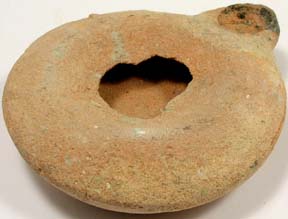
The pinnacle of Roman power was achieved in the 1st Century (A.D.) as Rome conquered much of Britain and Western Europe. At its peak, the Roman Empire stretched from Britain in the West, throughout most of Western, Central, and Eastern Europe, and into Asia Minor. For a brief time, the era of “Pax Romana”, a time of peace and consolidation reigned. Civilian emperors were the rule, and the culture flourished with a great deal of liberty enjoyed by the average Roman Citizen. However within 200 years the Roman Empire was in a state of steady decay, attacked by Germans, Goths, and Persians. The decline was temporarily halted by third century Emperor Diocletian.
In the 4th Century (A.D.) the Roman Empire was split between East and West. The Great Emperor Constantine again managed to temporarily arrest the decay of the Empire, but within a hundred years after his death the Persians captured Mesopotamia, Vandals infiltrated Gaul and Spain, and the Goths even sacked Rome itself. Most historians date the end of the Western Roman Empire to 476 (A.D.) when Emperor Romulus Augustus was deposed. However the Eastern Roman Empire (The Byzantine Empire) survived until the fall of Constantinople in 1453 A.D.

In the ancient world valuables such as coins and jewelry were commonly buried for safekeeping, and inevitably the owners would succumb to one of the many perils of the ancient world. Oftentimes the survivors of these individuals did not know where the valuables had been buried, and today, thousands of years later (occasionally massive) caches of coins and rings are still commonly uncovered throughout Europe and Asia Minor.
Throughout history these treasures have been inadvertently discovered by farmers in their fields, uncovered by erosion, and the target of unsystematic searches by treasure seekers. With the introduction of metal detectors and other modern technologies to Eastern Europe in the past three or four decades, an amazing number of new finds are seeing the light of day thousands of years after they were originally hidden by their past owners. And with the liberalization of post-Soviet Eastern Europe, new sources have opened eager to share in these ancient treasures.
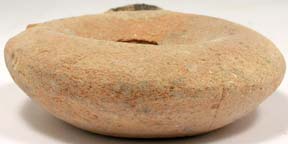
SHIPPING & RETURNS/REFUNDS: Due to its fragile nature this particular piece is only shipped in an oversized box with lots of Styrofoam peanuts. Additional items shipped together do result in a discount. We can add most other items we offer to the shipment for only $0.99 each. Your purchase will ordinarily be shipped within 48 hours of payment. We package as well as anyone in the business, with lots of protective padding and containers. All of our shipments are fully insured against loss, and our shipping rates include the cost of this coverage (through stamps.com, Shipsaver.com, the USPS, UPS, or Fed-Ex).
International tracking is provided free by the USPS for certain countries, other countries are at additional cost. We do offer U.S. Postal Service Priority Mail, Registered Mail, and Express Mail for both international and domestic shipments, as well United Parcel Service (UPS) and Federal Express (Fed-Ex). Please ask for a rate quotation. Please note for international purchasers we will do everything we can to minimize your liability for VAT and/or duties. But we cannot assume any responsibility or liability for whatever taxes or duties may be levied on your purchase by the country of your residence. If you don’t like the tax and duty schemes your government imposes, please complain to them. We have no ability to influence or moderate your country’s tax/duty schemes.
 If upon receipt of the item you are disappointed for any reason whatever, I offer a no questions asked 30-day return policy. Send it back, I will give you a complete refund of the purchase price; 1) less our original shipping/insurance costs, 2) less any non-refundable fees imposed by eBay. Please note that eBay may not refund payment processing fees on returns beyond a 30-day purchase window. So except for shipping costs, we will refund all proceeds from the sale of a return item. Though they generally do, eBay may not always follow suit. Obviously we have no ability to influence, modify or waive eBay policies.
If upon receipt of the item you are disappointed for any reason whatever, I offer a no questions asked 30-day return policy. Send it back, I will give you a complete refund of the purchase price; 1) less our original shipping/insurance costs, 2) less any non-refundable fees imposed by eBay. Please note that eBay may not refund payment processing fees on returns beyond a 30-day purchase window. So except for shipping costs, we will refund all proceeds from the sale of a return item. Though they generally do, eBay may not always follow suit. Obviously we have no ability to influence, modify or waive eBay policies.

